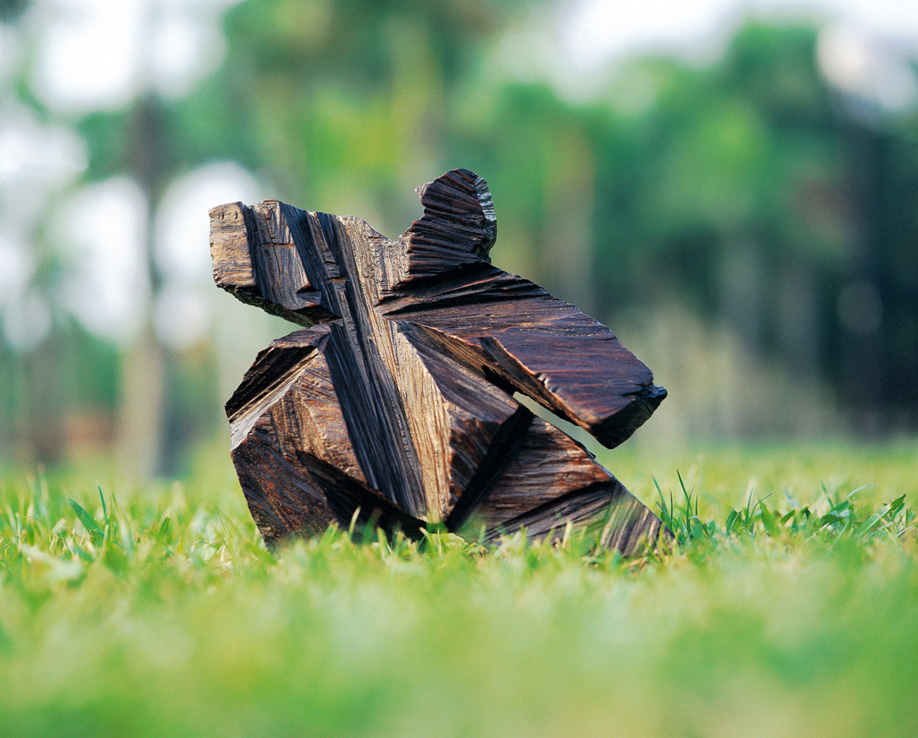|
Taichi Series – Single Whip
|
|
1992 Wood 30(L) x 17(W) x 25.5(H) cm Signed Ju Ming in Chinese and dated '92 |
|
Estimate
3,600,000 - 4,400,000 857,100 - 1,047,600 109,800 - 134,100
|
|
Sold Price
4,248,000 1,004,493 128,630
|
|
|
When studying under Yuyu Yang, the doyen of Taiwanese sculpture, Ju practised taijiquan on a daily basis. In addition to staying healthy, he soon grasped the essence of this ancient sport and began to ponder conveying his insights through works of sculpture. Taiji became the 'language' in which his sculpture was 'written'. As Ju Ming explains, 'Taijiquan is a method of maintaining your health through regular soft exercise. At the same time, it is the best example of "achieving oneness between individual and nature" that I am aware of.' Taijiquan is a way of directly experiencing and emulating the natural phenomena that makes up our universe. Ju Ming is devoted to the pursuit of this 'natural harmony', both in his life and his art. Having internalized taiji's principles, he strives to reveal them to others in his work, melding taiji and artistic skills into straightforward, unembellished manifestations of 'man's oneness with nature'.
Ju Ming's Single Whip epitomizes The fascinating tension between inner tranquility and outward action characteristic of most taiji moves. In this piece, Ju transcends the limitations of traditional sculpture, focussing not on the physical substance but its gentle motion, the aesthetic appeal that lies in the fluid lines and vigourous momentum of the low single whip move. In doing so, he gives us a hint of how taiji allows the life force to circulate freely through the adept's body.
Taking a closer look at the single whip movement one discovers that it begins with the feet, continues with the legs, is controlled by the waist and finds its final expression in the hands. The entire body is involved in the fluid motion. Vital energy, or qi, travels from the bottom to the top, from the feet through the legs to the waist, while the adept moves in accordance with the prescribed postures. While the look on the face is blank, the sculpture is yet brimming with expression, conveyed through the qi made visible in its lines and curves: the pieces of the Taiji series portray not only the adept's movements and breathing, but reveal his very mind. Ju Ming does not bother - does not need to bother - with a detailed depiction of facial features, because his concern is the performer's 'inner expression', the face of his soul as seen through the movements. 'The qi should flow freely and the mind be calm': nothing could describe the art of Ju Ming better than this old taiji adage.
